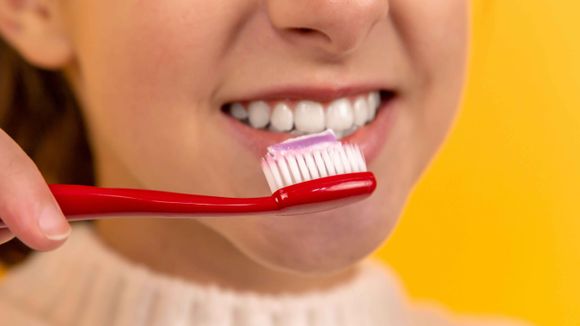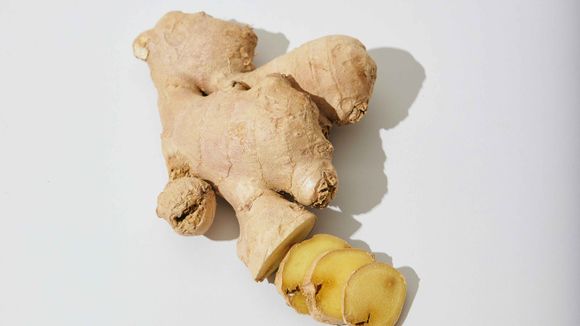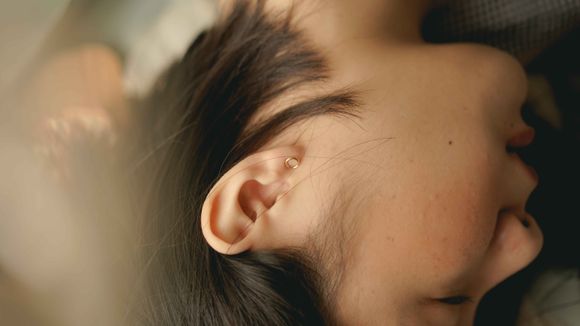Earache - what is it
Ear pain (otalgia) usually occurs in children, but it can also occur in adults. [ref. 1] The pain that starts inside the ear is known as primary otalgia, while the pain that occurs outside the ear is known as secondary otalgia. [Ref. 2]
Pain in the ear may occur gradually or suddenly. It can be dull, sharp or burning as a sensation and can be temporary or prolonged. Usually, pain occurs only in one ear, but sometimes it can appear in both ears. [ref. 3]
Signs and symptoms of earaches
Symptoms that may accompany ear pain include:
- High temperature
- Drainage from the ear
- Hearing loss
- Headache
- Difficulty chewing
- Jaw pain
- Click or pop the jaw
- Restlessness and irritability (in children)
- Increased crying (in children)
- Loss of appetite (in children)
Causes and risk factors for ear pain
Pain in the ear is often caused by blockage of the eutachium tube. This is the passage that extends from the middle ear to the back of the nasal cavity and throat. When the eustahium tube is blocked, the air and liquid can not pass through the passage, causing more pressure and pain.
Ear infections are a common cause of ear aches, especially in children. Infections of the middle ear, called otitis media, occur when fluids accumulate in the tubes inside the middle ear. This liquid can then become infected by a bacterium or virus. Children are more likely to develop ear infections than adults, partly because their eustahian tubes are smaller and straight, making it difficult to pass fluids. Their immune system is also still developing, making them more susceptible to infections.
Pain in the ear can be caused by scratching the inside of the ear with a finger, cotton swab or other object. Other possible causes of ear pain include:
- Allergies
- Sinus infection
- Sore throat
- Infection of the teeth
- Accumulation of earwax
- Temporomandibular joint syndrome

Eight effective means for relieving ear pain
Not all ear infections have a bacterial causative agent or need prescription drugs, including antibiotics. In fact, you can provide relief with some publicly available natural and home remedies such as:
Over-the-counter painkillers
Over-the-counter painkillers (OTC) such as ibuprofen and acetaminophen can be taken to control pain associated with a painful type of ear infection called acute otitis media. They are safe to use with or without antibiotics, but you should follow the dosing instructions on the label. These drugs can also help lower the temperature.
Warm or cold compress
Use a compress of ice or heat and place it on the affected ear to relieve pain. The temperature you use depends on your preferences. You can also alternate a cold and warm compress every 10 minutes.
Ear drops
Ear drops can reduce pressure in the ear caused by fluid and accumulation of earwax. You should read the instructions carefully and consult a doctor before applying ear drops to a child.
Ear drops are not a substitute for prescription ear drops or antibiotics, so they can be used short-term. If symptoms worsen, examination by a doctor is mandatory.
Massage
Gentle massage can help with ear pain, which is caused by a problem in the jaw or teeth or that cause headaches from tension. People can massage the affected area, as well as all surrounding muscles. For example, if the area behind the ear hurts, try massaging the muscles of the jaw and neck.
The massage can also help with the pain of an ear infection. Continuing to exert pressure downwards, rub forward to the front of the ears.
Garlic
Garlic has long been used in folk medicine to relieve pain. Some research suggests that it has antimicrobial properties that can fight infection. [Ref. 4]
People should not use it as a substitute for antibiotics prescribed by a doctor. Instead, consider adding garlic to an antibiotic diet to speed up relief and immune protection. You can also take it as a dietary supplement if you don't particularly like it.
Neck exercises
Some ear pain is caused by pressure in the ear canal. There are easy neck exercises that can be used to relieve this tension.
Follow these steps to help yourself through exercise if you have ear pain:
- Sit upright with both feet under pressure on the ground.
- Slowly turn your neck and head to the right until your head becomes parallel to the shoulder.
- Turn your head to the other side until your head becomes parallel to the left shoulder.
- Lift your shoulders high, as if trying to cover your ears with shoulders.
- Make the movements slowly, hold them slightly, stretching more, count to five, then relax.
- Repeat exercises often during the day.
Ginger
Ginger has natural anti-inflammatory properties that can help soothe ear pain. You can prepare ginger juice or strained oil warmed with ginger in it, and apply it to the outer ear canal. Do not put it directly in the ear.









